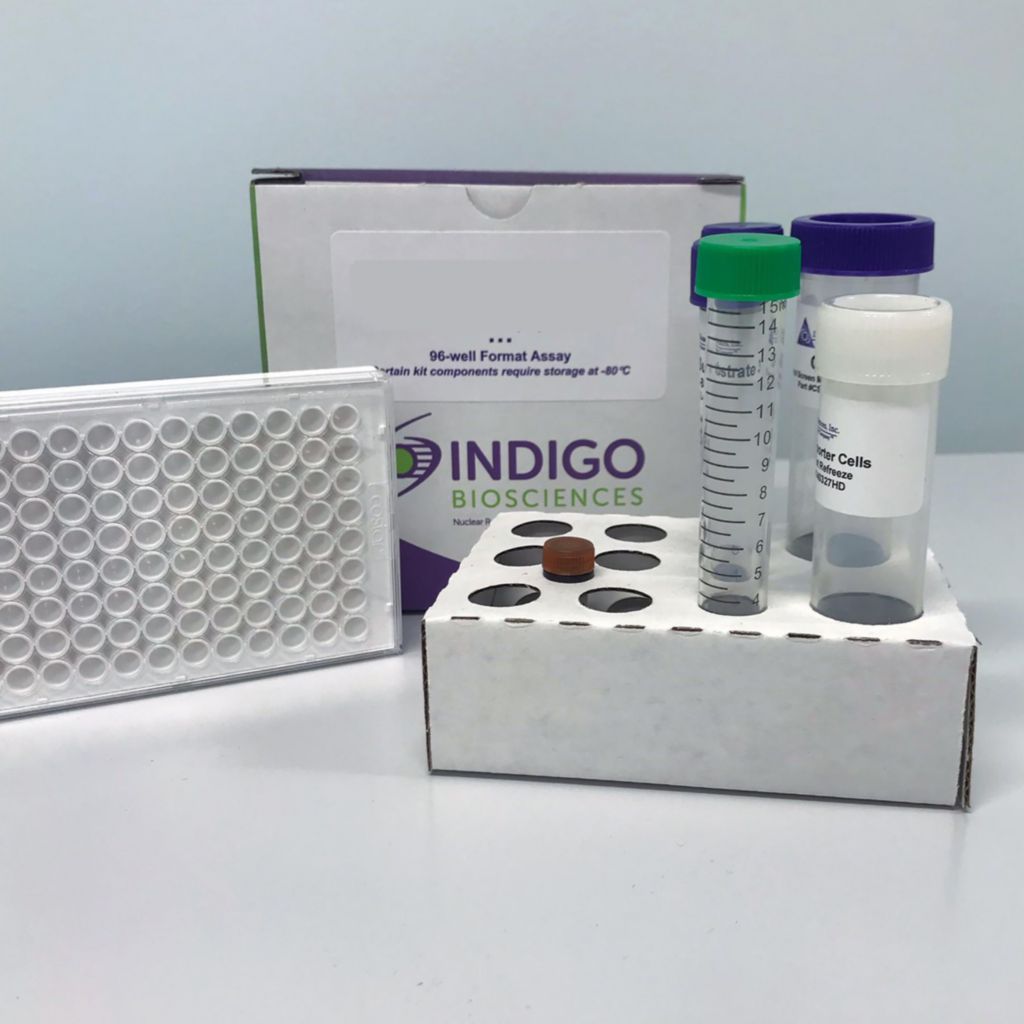Product Description and Product Data
This is an all-inclusive cell-based luciferase reporter assay kit targeting the Human Transforming Growth Factor beta Receptors I & II (TGFbR). INDIGO’s TGFbR reporter assay utilizes proprietary mammalian cells that have been engineered to provide constitutive expression of TGFbR. In addition to TGFbR Reporter Cells, this kit provides two optimized media for use during cell culture and in diluting the user’s test samples, a reference agonist, Luciferase Detection Reagent, and a cell culture-ready assay plate. The principal application of this assay is in the screening of test samples to quantify any functional activity, either agonist or antagonist, that they may exert against human TGFbR. This kit provides researchers with clear, reproducible results, exceptional cell viability post-thaw, and consistent results lot to lot. Kits must be stored at -80C. Do not store in liquid nitrogen. Note: reporter cells cannot be refrozen or maintained in extended culture.
Features
Clear, Reproducible Results
- All-Inclusive Assay Systems
- Exceptional Cell Viability Post-Thaw
- Consistent Results Lot to Lot
Product Specifications
| Target Type | Growth Factor Receptor | ||
| Species | Human | ||
| Receptor Form | Native | ||
| Assay Mode | Antagonist | ||
| Kit Components |
| ||
| Shelf Life | 6 months | ||
| Orthologs Available | No | ||
| Shipping Requirements | Dry Ice | ||
| Storage temperature | -80C |
Data
Target Background
The TGFβ assay uses proprietary human cells that provide constitutive expression of the Human type I and type II Transforming Growth Factor beta Receptors (TGFβ I/II), both of which are transmembrane serine/threonine kinase receptors. Receptor activation results when TGFβ binds to RII, which then phosphorylates and forms a heterodimer complex with RI. The mechanisms of TGFβ-RI/RII activation and ensuing signal transduction cascade have been well studied and involve the phosphorylation and interplay of a variety of Smad regulatory proteins and transcription factors. Additionally, cross-talk between the activated TGFβ and NF-kB signal transduction pathways have been characterized.
INDIGO’s Reporter Cells include the luciferase reporter gene functionally linked to tandem TGFβ Response Sequences (TRS) derived from the human plasminogen activator inhibitor-1 (PAI-1) promoter, a well-characterized TGFβ responsive target gene. The TRS sequences are readily bound by activated dimeric Smad3/Smad4 to initiate formation of a transcription complex. This binding leads to the activation of downstream substrates and regulatory proteins, including transcription of different target genes that function in differentiation, chemotaxis, proliferation, and activation of many immune cells. Among TGFβR’s functions is the regulation of inflammatory processes, particularly in the gut. It also plays a crucial role in stem cell differentiation, as well as T-cell regulation and differentiation.
Quantifying changes in luciferase activity in drug-treated cells versus untreated (or vehicle-treated) reporter cells provides a sensitive surrogate measure of drug-induced changes in TGFβR activity. The principal application of this TGFβ receptor assay is in the screening of compounds / drug candidates to quantify any functional activity, either agonist or antagonist, that they may exert against the human TGFβ receptor.
Also available as a service

